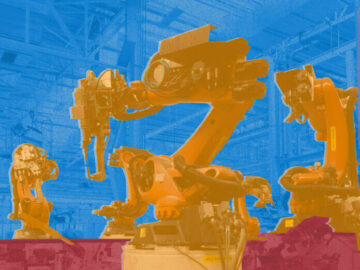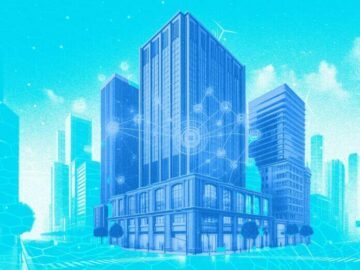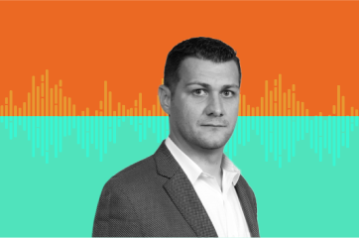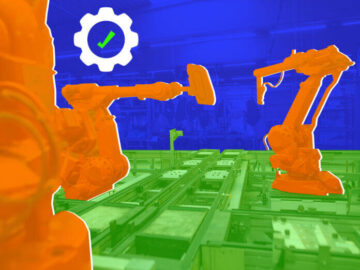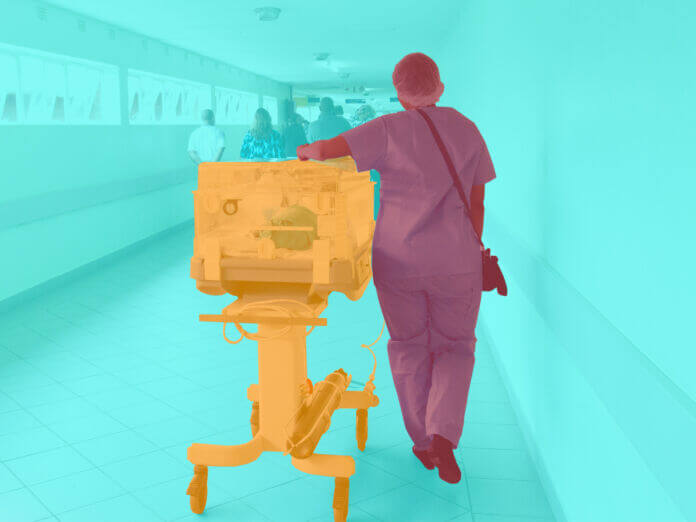
Despite ongoing advances in medicine itself, healthcare systems today face a wide array of problems, including staff shortages, poor patient outcomes, and high costs of care. Strained hospital resources and overburdened workers are, in many cases, both contributors to and casualties of these wide-ranging issues.
A 2019 Gallup poll revealed that 70% of Americans viewed the U.S. healthcare system as in “a state of crisis”—and post-pandemic, many challenges have exacerbated the issues facing healthcare systems.
Many of these challenges are, in essence, wicked problems requiring multi-pronged approaches. However, healthcare leaders may find that spatial and geolocating tools offer some potential solutions that, while not alleviating these wide-ranging problems entirely, can certainly mitigate some components.
Indoor location tracking technologies, in particular, can specifically ameliorate issues that narrow down to the fundamental question: “Where is this person/this asset right now?”
A quick primer: Indoor location technologies, often called “real-time location services” or RTLS, use radiofrequency systems. These systems require a wireless mesh network and various anchor points. Then, workers fit assets (like hospital tools and expensive machines) or individuals (such as high-risk patients, infants, and staff members) with tags. These tags send signals to the anchors, registering their location.
The most sensitive tools can achieve location accuracy up to 20 centimeters. Coverage is deployed within a certain area—for the use cases we’re about to discuss, within a hospital setting. Trackers generate a valuable data set, including the asset’s or person’s location and time, which has a range of helpful applications.
Safeguarding Employees
Particularly in the United States, but also across the globe, staff members are under attack with alarming frequency, either by patients, relatives of patients, or intruders. In our experience, these situations tend to occur when the aggressor is unwilling to comply with an employee’s request or hospital regulation.
These attacks may result in bodily injury, or in the most severe instances, active shooter situations. This growing trend has significant implications for hospital safety, both for employees and for other patients and families.
Hospital leaders can reduce the risk to their employees by leveraging RTLS in healthcare along with basic communicators, such as panic buttons or radios. Ideally, if an employee feels threatened or is under attack, they can press their panic button, automatically deploying security or other rescue personnel to come to their aid.
Using a location tracker in combination with the panic button enables rescue teams to know exactly where to find the staff member under duress—without having to waste critical time searching. There are also RTLS tools that can determine the distance between two individuals. (These technologies were utilized to facilitate social distancing during COVID-19.)
Some hospitals, particularly those with dangerous patient populations (such as criminal psychiatric wards) are leveraging these distance-gauging tools to be notified whenever someone gets too close to one of their employees—say, when someone gets within six feet, which may indicate a threat to that employee’s safety. In these instances, similar alerts can be set off to automatically deploy security to that employee’s location.
Hospital leaders must consider the very real threats to their staff members’ lives in evaluating these tools, and select those that offer the best protection for their people.
Keeping Track Of Assets
While it may not make as many headlines as staff or bed shortages, hospitals worldwide struggle with equipment loss, theft, and damage. Particularly in big hospitals, not knowing where mission-critical assets are located can adversely impact patient health outcomes, costs, and satisfaction of both patients and employees.
What if a patient needs a life-saving device such as a ventilator, a defibrillator, or a dialysis machine, and someone cannot find it quickly? This could result in worsening of the patient’s condition or even their death. Knowing where to find the right tools at the point of care is paramount.
Missing tools and machines drastically impact hospital budgets as well. We’ve worked with hospitals that have ordered more wheelchairs, IV drips, heart monitors, etc., simply because they could not find them—only to have these implements turn up weeks later in some unchecked part of the hospital. Meanwhile, the hospital has already wasted money replacing those assets.
Protecting Vulnerable Patients
“Wander management” is a big concern, particularly in senior and memory care centers. The common problem is that residents of a facility may wander off. This is a challenge: From a regulatory perspective, it is illegal to physically block residents from leaving the center.
Yet, when residents wander off, they often do not know how to return and unfortunately are prone to getting hit by cars or becoming dehydrated or hypothermic.
Administrators for these centers can use RTLS solutions in healthcare to be notified when a resident approaches the exit gate. While locking the gate is not legal, security staff can receive alerts when a resident tries to leave so they can persuade the resident to stay or at least send someone to accompany them. This way, many tragic outcomes can be avoided.
Memory care center administrators may also use these tools to track the socialization of these residents: How much time do they spend socializing? How much time do they spend alone in their rooms? Do they frequent the dining hall? Do they get exercise? These metrics can provide insights that dramatically improve patient care and address potentially problematic health issues.
Looking Ahead
An emerging trend in healthcare involves using RTLS to track patient flow in hospitals: We can use data from trackers to determine how long a patient spends in the waiting room, how long they wait in an exam room before seeing a provider, how long they interact with that provider, how long they wait for a specific procedure (such as an MRI), and the duration of their visit altogether.
The goal of monitoring these data is to identify bottlenecks and inefficiencies in the patient journey that compromise patient care and lead to wasted hospital spending.
Ultimately, healthcare leaders must look with clear eyes at the risks and challenges that their hospitals are facing, and consider what RTLS technological investments can best safeguard and support their people, patients, and assets. When hospitals gain improved safety and functionality, everyone benefits.
- SEO Powered Content & PR Distribution. Get Amplified Today.
- PlatoData.Network Vertical Generative Ai. Empower Yourself. Access Here.
- PlatoAiStream. Web3 Intelligence. Knowledge Amplified. Access Here.
- PlatoESG. Carbon, CleanTech, Energy, Environment, Solar, Waste Management. Access Here.
- PlatoHealth. Biotech and Clinical Trials Intelligence. Access Here.
- Source: https://www.iotforall.com/spatial-reasoning-evolving-rtls-solutions-in-healthcare
- :has
- :is
- :not
- :where
- $UP
- 1
- 20
- a
- About
- accompany
- accuracy
- Achieve
- across
- active
- address
- administrators
- advances
- adversely
- Aid
- Alerts
- alone
- along
- already
- also
- altogether
- Americans
- an
- Anchor
- and
- applications
- approaches
- ARE
- Array
- AS
- asset
- Assets
- At
- attack
- Attacks
- automatically
- avoided
- basic
- BE
- because
- becoming
- before
- benefits
- BEST
- between
- Big
- Block
- both
- bottlenecks
- Budgets
- but
- button
- by
- called
- CAN
- cannot
- care
- cars
- cases
- Center
- Centers
- certain
- certainly
- challenge
- challenges
- clear
- Close
- combination
- come
- Common
- comply
- components
- compromise
- Concern
- condition
- Consider
- contributors
- Costs
- could
- coverage
- COVID-19
- Criminal
- critical
- damage
- Dangerous
- data
- data set
- Death
- deploy
- deployed
- deploying
- Determine
- device
- Dialysis
- dining
- discuss
- distance
- do
- down
- dramatically
- drastically
- duration
- during
- during COVID-19
- either
- emerging
- Employee
- employees
- enables
- entirely
- equipment
- essence
- etc
- evaluating
- Even
- everyone
- evolving
- exactly
- exam
- Exercise
- Exit
- expensive
- experience
- Eyes
- facilitate
- Facility
- facing
- families
- feels
- Feet
- Find
- fit
- flow
- For
- Frequency
- frequent
- from
- functionality
- fundamental
- Gain
- gate
- generate
- get
- getting
- globe
- goal
- Growing
- Hall
- Have
- having
- Headlines
- Health
- healthcare
- Heart
- helpful
- High
- high-risk
- Hit
- Hospital
- hospitals
- How
- How To
- However
- HTTPS
- ideally
- identify
- if
- Illegal
- Impact
- implements
- implications
- improve
- improved
- in
- Including
- indicate
- individuals
- Indoor
- inefficiencies
- injury
- insights
- instances
- interact
- Investments
- involves
- iot
- issues
- IT
- itself
- journey
- jpg
- Know
- Knowing
- later
- lead
- leaders
- least
- Leave
- leaving
- Legal
- leveraging
- like
- Lives
- located
- location
- location tracking
- Long
- Look
- loss
- machine
- Machines
- make
- many
- max-width
- May..
- Meanwhile
- medicine
- member
- Members
- Memory
- mesh
- Mesh network
- Metrics
- Mitigate
- money
- monitoring
- monitors
- more
- most
- MRI
- much
- must
- narrow
- needs
- network
- now
- occur
- of
- off
- offer
- often
- ONE
- ongoing
- or
- Other
- our
- outcomes
- Panic
- Paramount
- part
- particular
- particularly
- patient
- patient care
- patients
- PBS
- People
- Personnel
- perspective
- Physically
- plato
- Plato Data Intelligence
- PlatoData
- Point
- points
- poor
- populations
- post-pandemic
- potential
- potentially
- press
- primer
- Problem
- problems
- procedure
- protection
- provide
- provider
- question
- Quick
- quickly
- range
- real
- receive
- reduce
- registering
- Regulation
- regulatory
- relatives
- request
- require
- rescue
- residents
- Resources
- result
- return
- Revealed
- right
- Risk
- risks
- Room
- Rooms
- s
- Safety
- satisfaction
- searching
- security
- seeing
- send
- senior
- sensitive
- set
- setting
- severe
- shooter
- shortages
- signals
- significant
- similar
- simply
- situations
- SIX
- So
- Social
- social distancing
- socialization
- socializing
- Solutions
- some
- Someone
- spaces
- Spatial
- specific
- specifically
- spend
- Spending
- Staff
- State
- States
- stay
- Struggle
- such
- support
- system
- Systems
- teams
- technological
- Technologies
- that
- The
- theft
- their
- Them
- then
- There.
- These
- they
- this
- those
- threat
- threats
- time
- to
- today
- too
- tools
- track
- Trackers
- Tracking
- Trend
- TURN
- two
- u.s.
- under
- unfortunately
- United
- United States
- use
- using
- utilized
- Valuable
- various
- ventilator
- very
- viewed
- Visit
- Vulnerable
- wait
- Waiting
- Waste
- wasted
- Way..
- we
- Weeks
- WELL
- were
- What
- when
- whenever
- which
- while
- wide
- wireless
- with
- within
- worked
- workers
- zephyrnet



